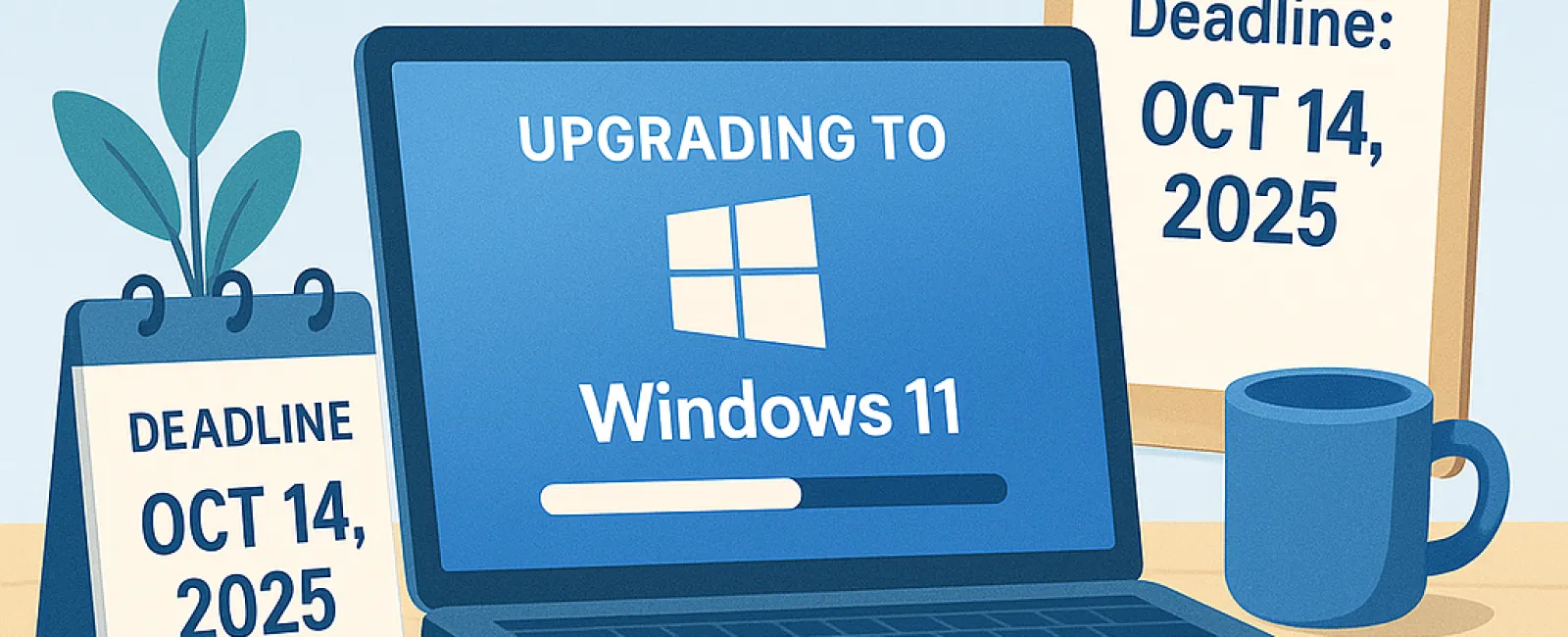June 23, 2025
If your business is still using Windows 10, it's time to face the facts: the countdown has begun.
Microsoft will officially stop supporting Windows 10 on October 14, 2025. After that date, there will be no more security updates, bug fixes, or technical assistance.
Here's the critical point for business owners: the cost of waiting isn't just about eventually having to upgrade. It's about the risks and expenses you face right now by delaying.
"We'll Deal With It Later" Can Cost You More Than You Think
We understand—upgrading every device in your business isn't exactly an exciting budget priority. It's tempting to put it off… until something goes wrong.
But here's what procrastination really costs you:
1. You're Operating Without Protection
Once Microsoft ends Windows 10 updates, any new security vulnerabilities become your responsibility. Hackers target outdated systems because they're easy prey. It's like locking the front door but leaving the windows open. One security breach could cost you thousands—or even jeopardize your entire business.
2. Compatibility Problems with Software and Hardware
Many essential business applications—accounting software, CRMs, industry-specific tools—are already phasing out support for Windows 10. Imagine your system crashing mid-project or during an important client demo. What would that cost you?
And it's not just software. New printers, peripherals, and security devices may also stop working properly with an outdated OS.
3. Decreased Productivity
Older systems run slower, crash more often, and frustrate your team. Even small delays add up, lowering efficiency, morale, and your competitive edge. If each employee loses 10-15 minutes daily to tech issues, what does that add up to over a month?
4. Emergency Upgrades Are Costly
Waiting until systems fail or employees get locked out doesn't just cause stress—it triggers expensive emergency spending:
- Rush hardware orders
- Premium IT labor fees
- Business disruptions during replacements
A little foresight now can save you from scrambling—and overspending—later.
5. Compliance Risks
If your business handles sensitive data or must comply with regulations like HIPAA or PCI-DSS, running unsupported software can lead to fines or legal trouble. Most regulatory standards require up-to-date security measures—Windows 10 won't meet those after October 2025.
What Smart Business Owners Are Doing Today
They're getting ahead of the deadline by not only upgrading devices but also using this opportunity to:
- Audit which devices need replacement
- Streamline software and tools
- Strengthen cybersecurity defenses
- Plan IT budgets wisely for 2025 and beyond
How to Ensure a Smooth Transition
We recommend the following steps:
- Run compatibility checks: Identify which machines can upgrade to Windows 11 and which need replacing.
- Audit your applications: Confirm your critical software works on Windows 11 or newer platforms.
- Budget for hardware now: Avoid supply chain delays by planning ahead.
- Partner with an IT provider. Let experts manage the entire transition—minimizing downtime and eliminating surprises.
Don't wait until support ends—start planning your upgrade today to protect your business and keep operations running smoothly.
Don't Wait Until October To Panic
Waiting until the last minute will cost you more - in
money, stress and missed opportunity. We're helping small businesses make the
upgrade the smart way: planned, smooth and optimized for future growth.
Click
here or call us at (760) 266-5444 to book your Discovery Call
and we'll help you identify what
needs upgrading, what can stay and how to build a transition plan that won't
disrupt your business before the deadline.



